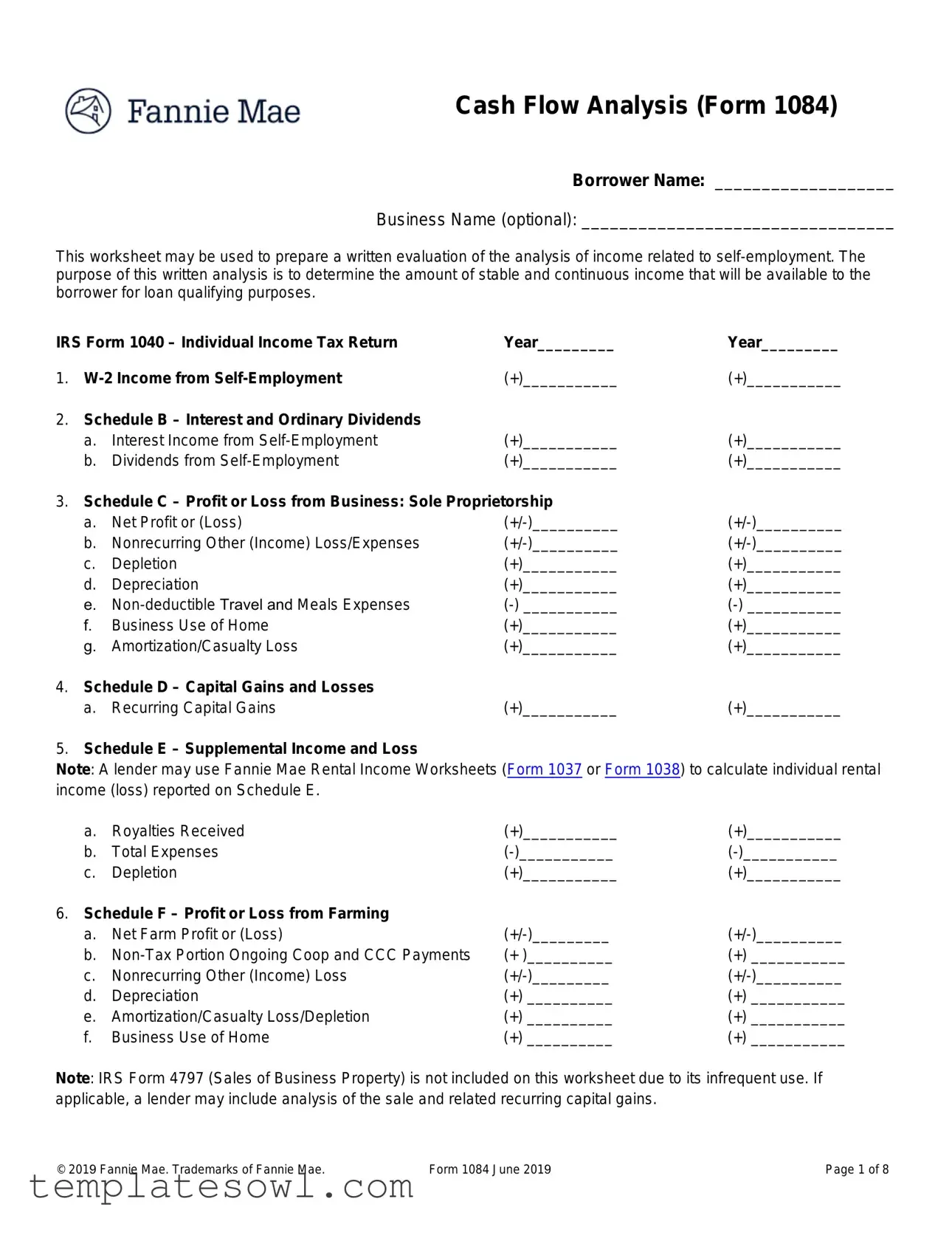What is the Fannie 1084 form used for?
The Fannie 1084 form, also known as the Cash Flow Analysis form, is designed to evaluate the income related to self-employment for loan qualification purposes. It helps lenders assess the stability and continuity of income that can be available to borrowers who are self-employed.
Who can use the Fannie 1084 form?
This form is specifically for self-employed borrowers. It is useful for individuals who earn income from a business, partnership, or corporation. Borrowers must fill in their income details as reported on various IRS forms, such as 1040, 1065, and 1120S.
What kind of income can be reported on this form?
Borrowers can report several types of income on the Fannie 1084 form. This includes W-2 income, dividends, interest, profits or losses from a sole proprietorship, farming income, and royalties. Each type of income has specific lines on the form for accurate reporting.
How does the form assess income stability?
The form assesses income stability by analyzing past earnings and any adjustments that might apply. By reviewing income from multiple years and making proper deductions or additions, lenders can determine whether the reported income is stable enough to qualify for a loan.
What is a Schedule K-1 and why is it important?
A Schedule K-1 reports a partner's or shareholder's share of income, deductions, and credits from a partnership or S corporation. It is crucial because lenders need this documentation to verify the income distribution to the borrower. They must confirm that income was actually received before considering it in the cash flow analysis.
Can losses be reported on the Fannie 1084 form?
Yes, self-employed borrowers can report losses on the form. If losses can be documented and are expected to be nonrecurring, they may be considered in the cash flow analysis. However, lenders typically focus more on consistent income when evaluating loan applications.
Are there expenses that must be deducted from reported income?
Yes, certain non-deductible expenses, like travel and entertainment costs, must be subtracted from reported income. It's important to identify these expenses clearly to present an accurate picture of net income.
What if my business income fluctuates widely?
If business income fluctuates, the lender may want to see several years of income statements to understand the overall trend. It's essential to provide a clear explanation of any irregularities to help lenders evaluate eligibility fairly.
How does this form relate to other IRS forms?
The Fannie 1084 form complements various IRS forms like the 1040, 1065, and 1120S. Borrowers need to reference these forms to fill out the Fannie 1084 accurately. Each provides context and verification for the income reported, ensuring robust documentation for lenders.
What common mistakes should be avoided when completing the form?
Common mistakes include failing to provide proper documentation, ignoring nonrecurring income or losses, or incorrectly adding back depreciation. It's crucial to check all entries against the supporting IRS forms to avoid inconsistencies that could delay the loan approval process.

